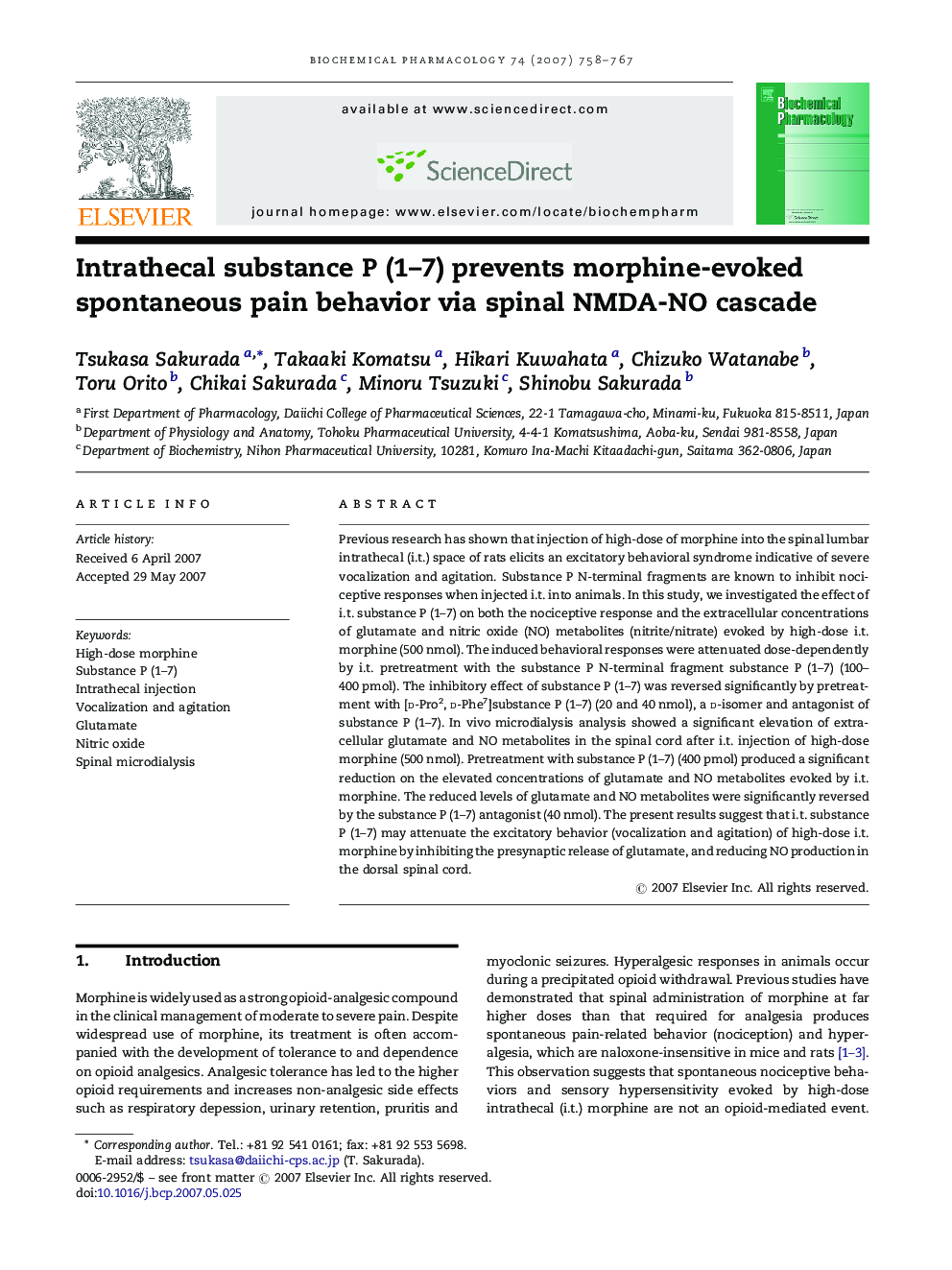| Article ID | Journal | Published Year | Pages | File Type |
|---|---|---|---|---|
| 2515142 | Biochemical Pharmacology | 2007 | 10 Pages |
Previous research has shown that injection of high-dose of morphine into the spinal lumbar intrathecal (i.t.) space of rats elicits an excitatory behavioral syndrome indicative of severe vocalization and agitation. Substance P N-terminal fragments are known to inhibit nociceptive responses when injected i.t. into animals. In this study, we investigated the effect of i.t. substance P (1–7) on both the nociceptive response and the extracellular concentrations of glutamate and nitric oxide (NO) metabolites (nitrite/nitrate) evoked by high-dose i.t. morphine (500 nmol). The induced behavioral responses were attenuated dose-dependently by i.t. pretreatment with the substance P N-terminal fragment substance P (1–7) (100–400 pmol). The inhibitory effect of substance P (1–7) was reversed significantly by pretreatment with [d-Pro2, d-Phe7]substance P (1–7) (20 and 40 nmol), a d-isomer and antagonist of substance P (1–7). In vivo microdialysis analysis showed a significant elevation of extracellular glutamate and NO metabolites in the spinal cord after i.t. injection of high-dose morphine (500 nmol). Pretreatment with substance P (1–7) (400 pmol) produced a significant reduction on the elevated concentrations of glutamate and NO metabolites evoked by i.t. morphine. The reduced levels of glutamate and NO metabolites were significantly reversed by the substance P (1–7) antagonist (40 nmol). The present results suggest that i.t. substance P (1–7) may attenuate the excitatory behavior (vocalization and agitation) of high-dose i.t. morphine by inhibiting the presynaptic release of glutamate, and reducing NO production in the dorsal spinal cord.
